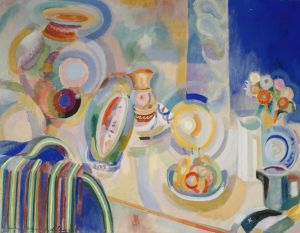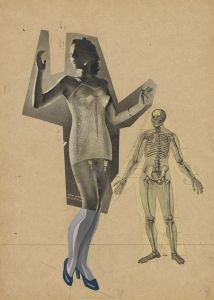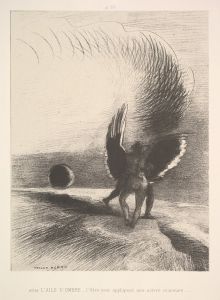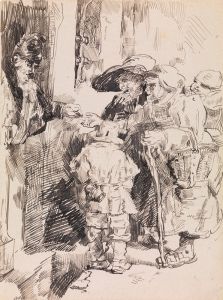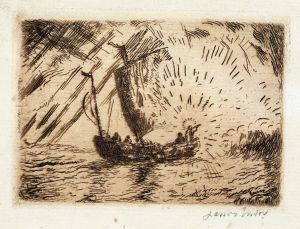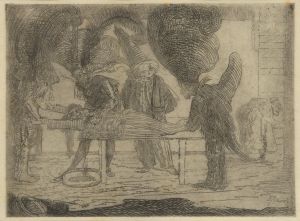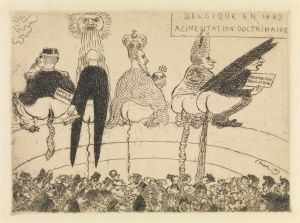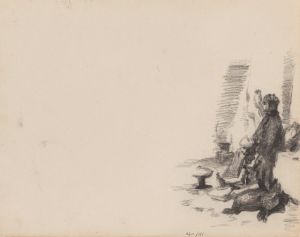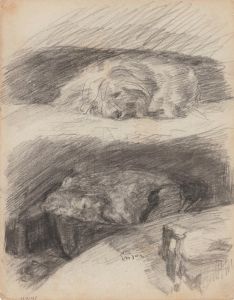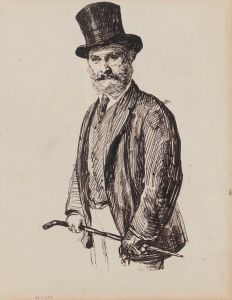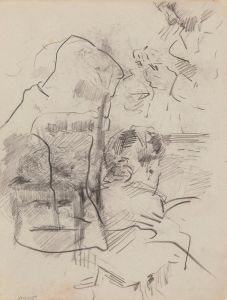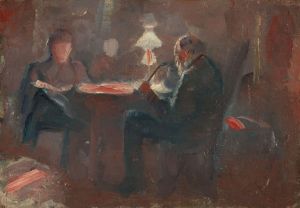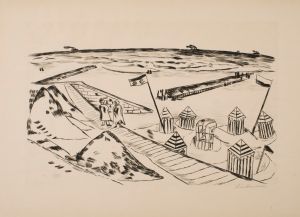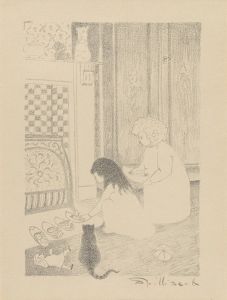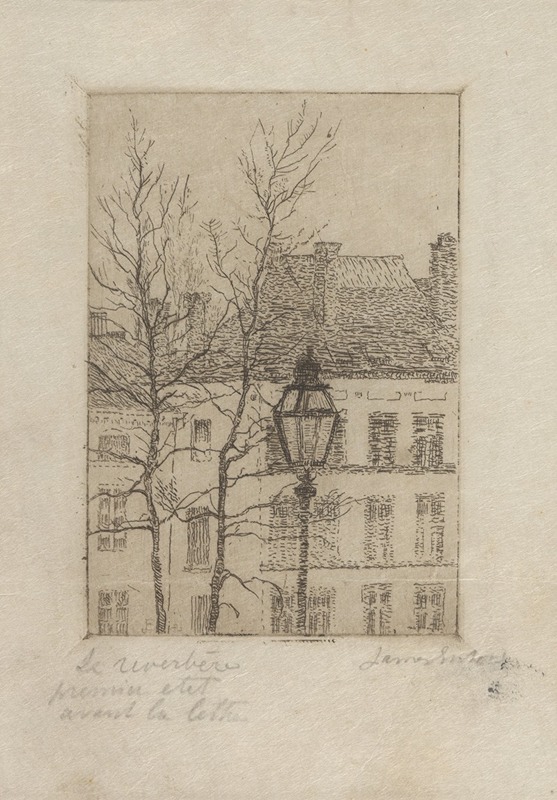
Straatlantaarn
A hand-painted replica of James Ensor’s masterpiece Straatlantaarn, meticulously crafted by professional artists to capture the true essence of the original. Each piece is created with museum-quality canvas and rare mineral pigments, carefully painted by experienced artists with delicate brushstrokes and rich, layered colors to perfectly recreate the texture of the original artwork. Unlike machine-printed reproductions, this hand-painted version brings the painting to life, infused with the artist’s emotions and skill in every stroke. Whether for personal collection or home decoration, it instantly elevates the artistic atmosphere of any space.
James Ensor, a prominent Belgian painter and printmaker, is known for his unique and often eccentric style that blends elements of symbolism, expressionism, and surrealism. One of his lesser-known works is "Straatlantaarn," which translates to "Street Lantern" in English. While there is limited information specifically about this painting, we can explore Ensor's broader artistic context and style to provide some insight.
James Ensor was born on April 13, 1860, in Ostend, Belgium, and spent most of his life there. He was a key figure in the Belgian avant-garde movement and played a significant role in the development of modern art in Europe. Ensor's work is characterized by its vivid use of color, imaginative subject matter, and often satirical or grotesque themes. He was particularly fascinated by masks, skeletons, and carnival scenes, which frequently appear in his paintings.
Ensor's artistic career began in the late 19th century, a period marked by significant changes in the art world. He was initially influenced by the Impressionists but soon developed his own distinctive style. His work often defied conventional artistic norms, which led to mixed reactions from critics and the public. Despite this, Ensor's innovative approach earned him a place among the pioneers of modern art.
The painting "Straatlantaarn" likely reflects Ensor's interest in urban scenes and the interplay of light and shadow, common themes in his work. Street lanterns, as a subject, could symbolize the illumination of the mundane or the eerie transformation of familiar spaces at night. Ensor's use of light often adds a dramatic or mysterious quality to his paintings, inviting viewers to explore deeper meanings beneath the surface.
Ensor's fascination with light is evident in many of his works, where he uses it to create contrast and highlight specific elements within a scene. This technique can be seen in his famous painting "The Entry of Christ into Brussels in 1889," where light plays a crucial role in directing the viewer's attention and enhancing the overall composition.
Throughout his career, Ensor remained somewhat of an outsider in the art world, often working independently and resisting affiliation with specific artistic movements. However, his influence on later artists, particularly the Expressionists and Surrealists, is undeniable. His willingness to explore unconventional themes and techniques paved the way for future generations of artists seeking to break free from traditional constraints.
In summary, while specific details about "Straatlantaarn" are scarce, understanding James Ensor's broader artistic context provides valuable insight into the potential themes and techniques present in the painting. Ensor's work continues to be celebrated for its originality and its contribution to the evolution of modern art.





